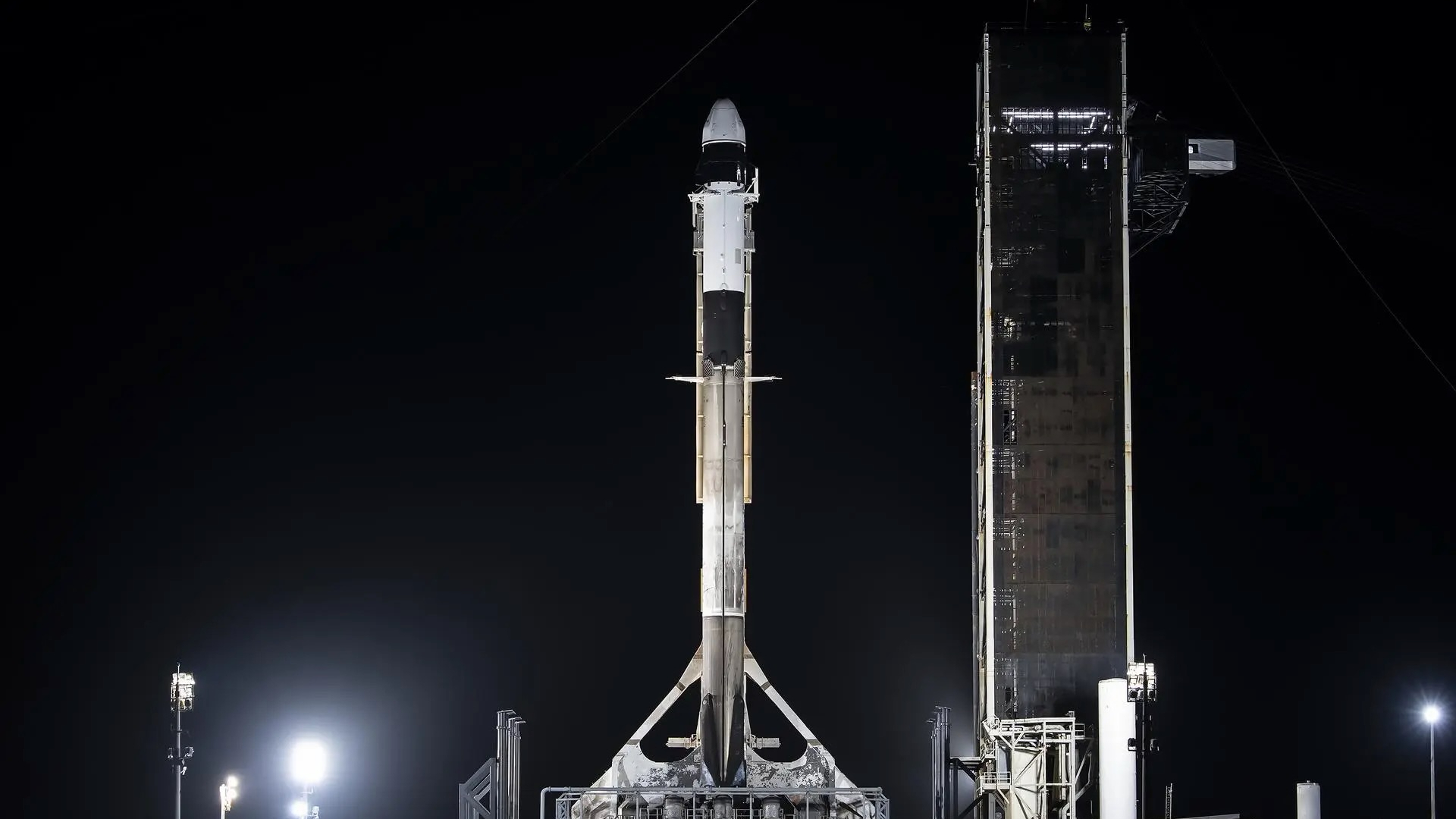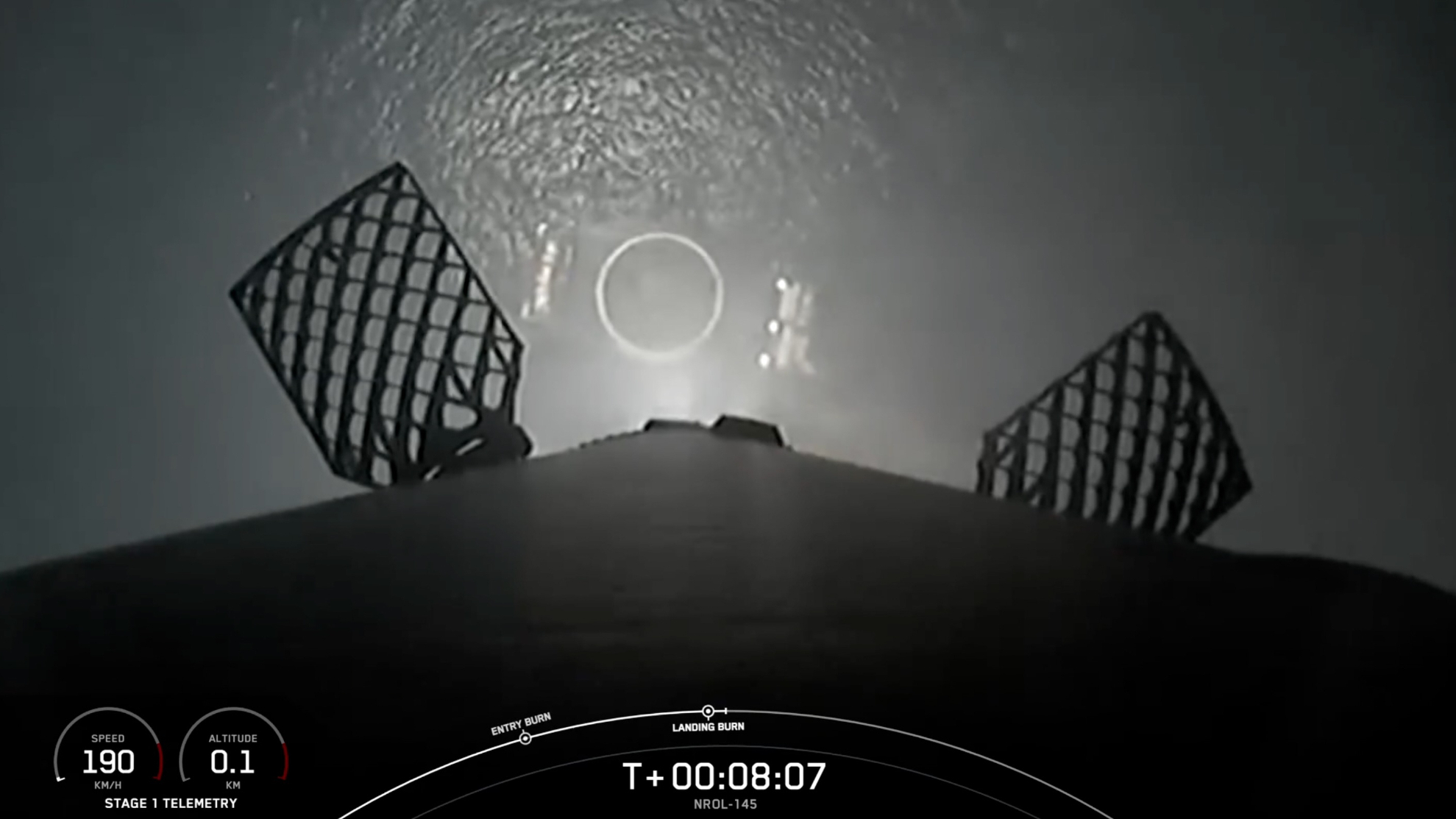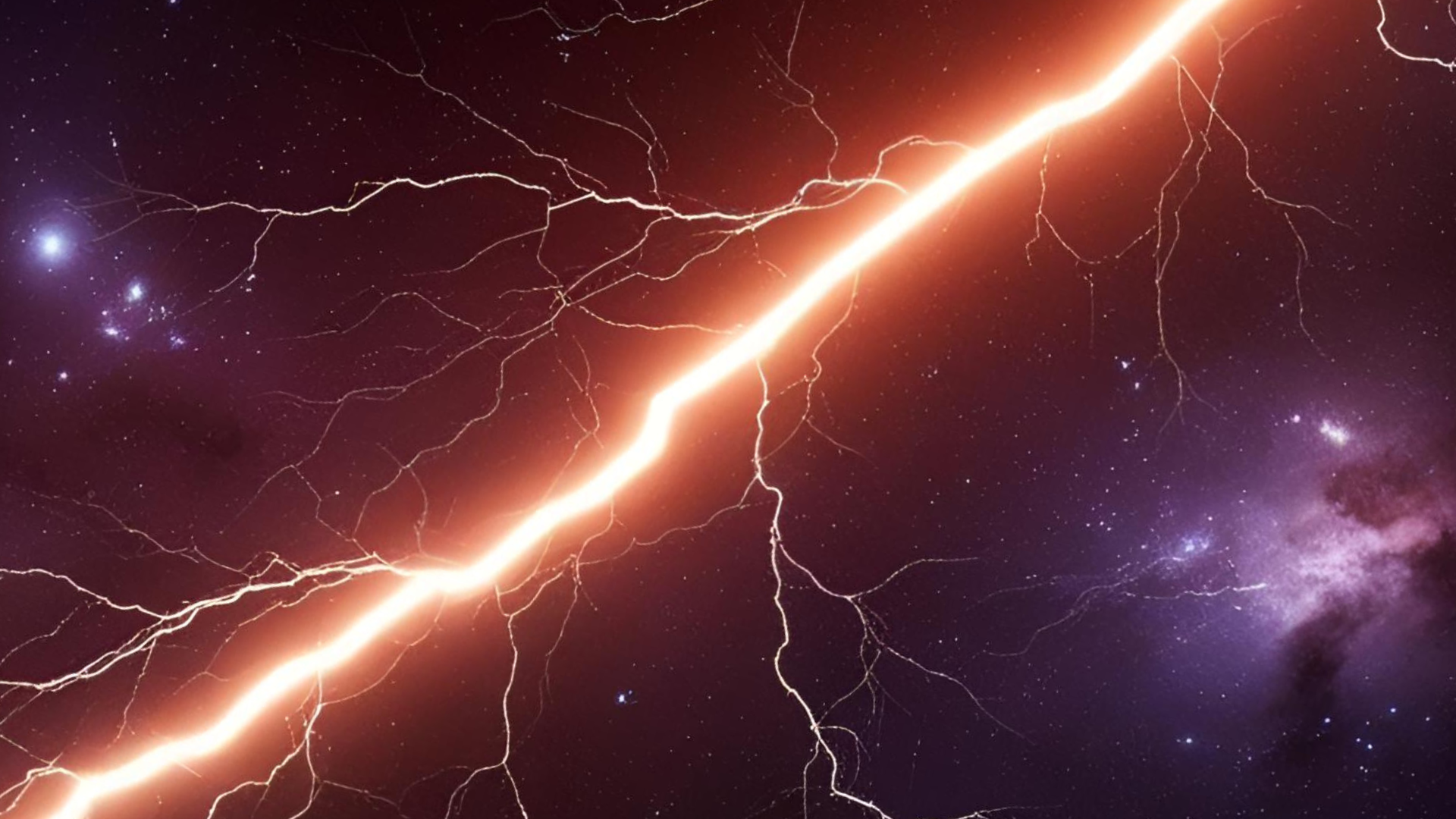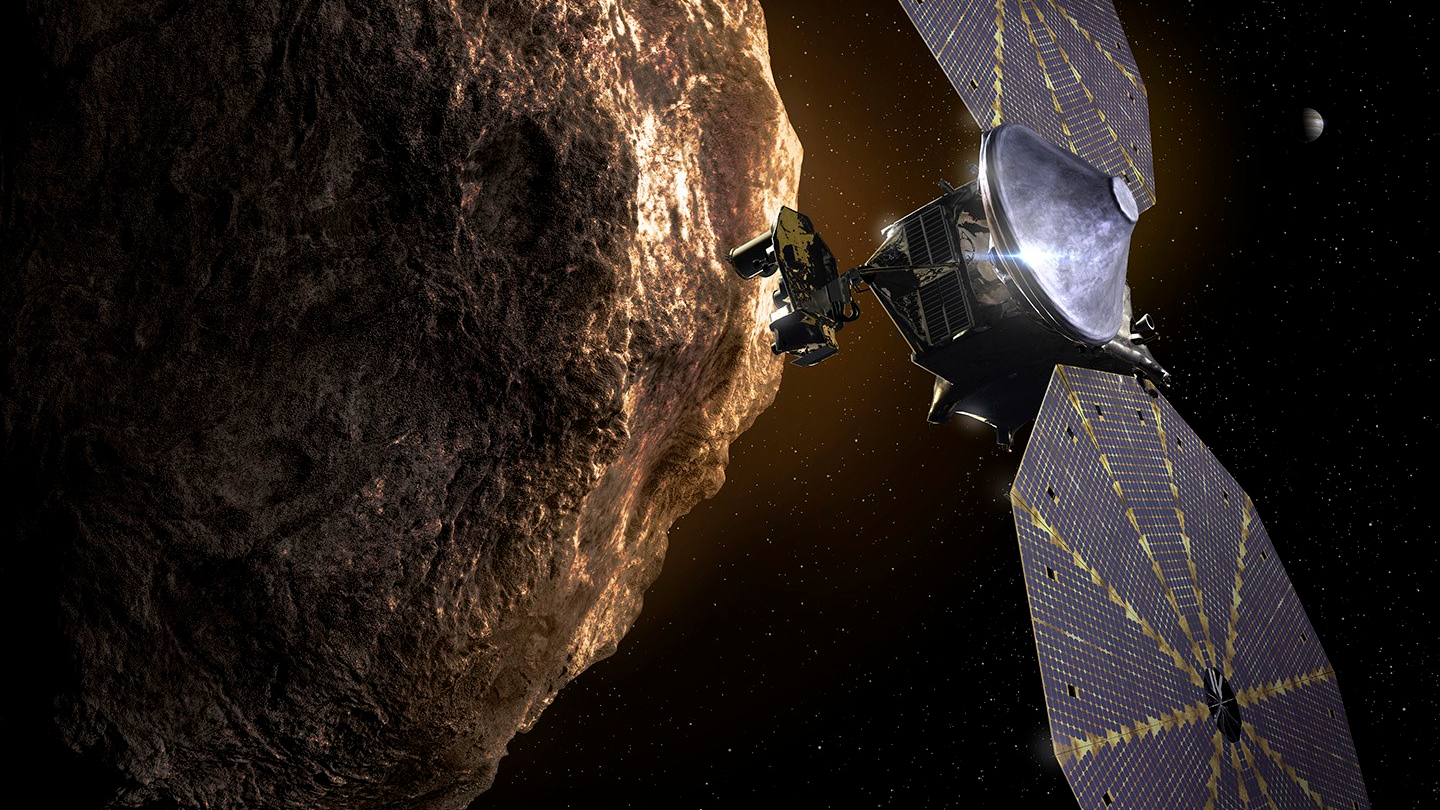Nearby asteroid may contain elements 'beyond the periodic table', new study suggests
Naturally occurring superheavy elements beyond those listed in the periodic table could potentially explain why asteroid 33 Polyhymnia is so dense, new research suggests.
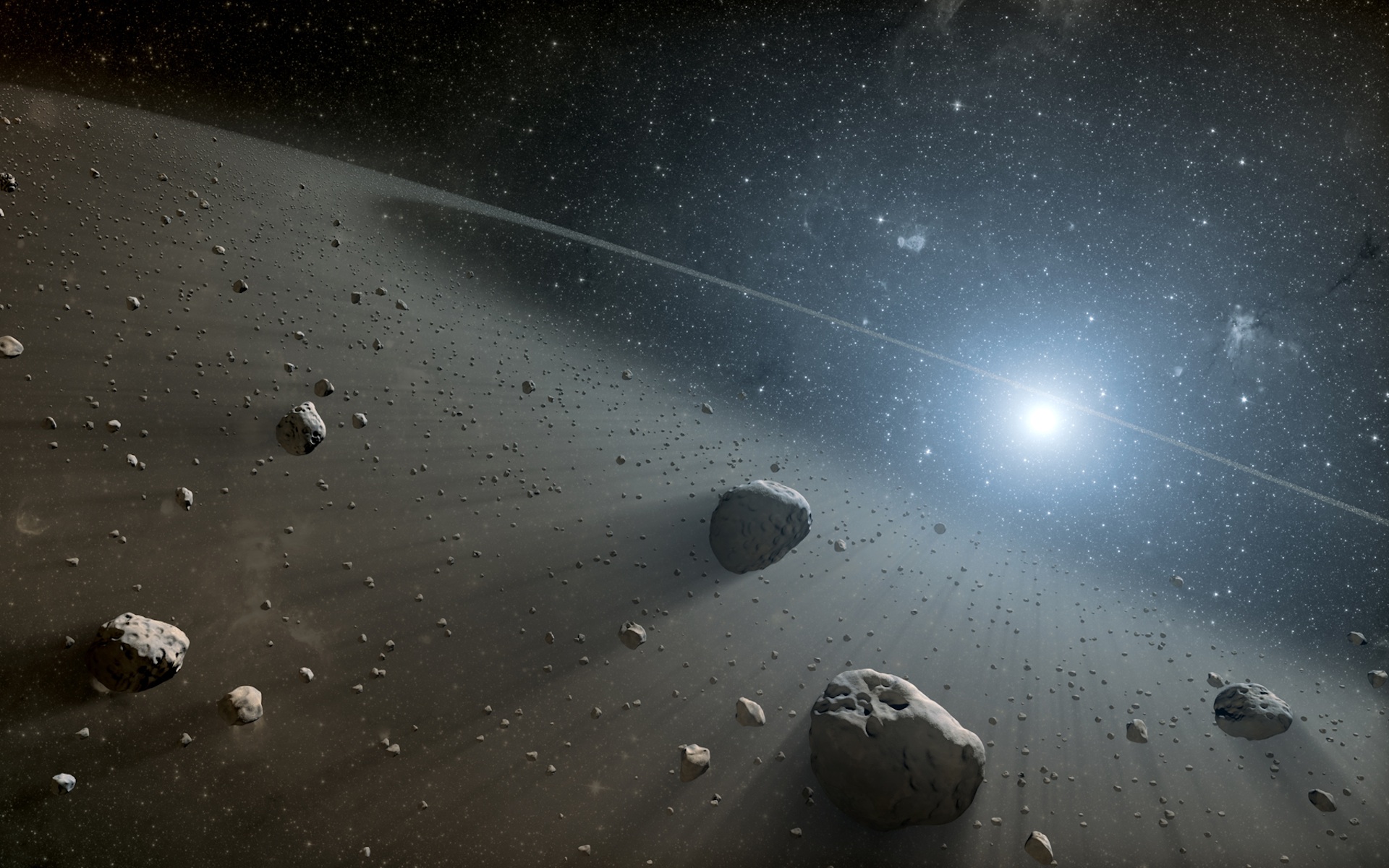
A handful of asteroids in our solar system are so dense that no element on Earth can explain their properties. Instead, they may be made of naturally occurring "superheavy elements" beyond those listed in the periodic table — our current best catalog of 118 chemical elements — new research suggests.
"If asteroids do indeed contain superheavy elements, it would open numerous questions surrounding how these elements were formed and why we have not discovered them outside of asteroids yet," study co-author Johann Rafelski, a physics professor at the University of Arizona, told Live Science.
Immensely heavy space rocks, known as compact ultra dense objects (CUDOs), are typically heavier than osmium, the heaviest naturally occurring element on Earth. One such rock is 33 Polyhymnia, located in the main asteroid belt between Mars and Jupiter. Scientists have long been puzzled by its density, as the 34-mile-wide (55 kilometers) object does not have the mass needed to squeeze minerals into ultradense forms. However, its makeup has been difficult to pin down, thanks to its small size and vast distance from Earth.
Related: Weird cosmic object identified as the remains of an exploded dead star
Previous research suggested that the density of CUDOs like 33 Polyhymnia could be explained if the objects were filled with mysterious dark matter particles that perhaps do not exist as freely distributed particles but rather in conglomerations within asteroids. Now, in a study published Sept. 15 in the The European Physical Journal Plus, Rafelski and two colleagues mathematically demonstrated that the existence of CUDOs can be explained not with dark matter, but with unknown classes of chemical elements beyond the periodic table that are much denser than osmium.
Scientists have long debated whether elements heavier than oganesson, the last one in the periodic table, could occur naturally and be stable. Such superheavy elements are highly radioactive and decay within milliseconds, thanks to repulsion among the high number of protons packed in their nuclei.
Previous work suggested there is a theoretical region of the periodic table termed an "island of stability" of superheavy elements around atomic number 164. At this weight, elements might not undergo rapid radioactive decay and would exist for short periods of time. New calculations by Rafelski and his team agree with this prediction.
Get the Space.com Newsletter
Breaking space news, the latest updates on rocket launches, skywatching events and more!
"All super-heavy elements — those that are highly unstable as well as those that are simply unobserved — have been lumped together as 'unobtainium,'" Rafelski said in a statement. "The idea that some of these might be stable enough to be obtained from within our solar system is an exciting one."
To arrive at their conclusions, the researchers theorized the atomic structure of hypothetical superheavy elements using a crude model of an atom known as the Thomas-Fermi model. They found that elements with atomic numbers near 164 would have a density somewhere between 36 and 68.4 grams per cubic centimeter (20 and 39.5 ounces per cubic inch).
This range is close to the calculated density of 75.28 g per cubic cm (43.5 ounces per cubic inch) for 33 Polyhymnia. The results suggest that superheavy elements, if they really exist, could explain the massive density seen in the space rock and others similar to it, although dark matter cannot be fully ruled out as a possible resident within ultradense asteroids.
"What is especially exciting about this work is that we do not know exactly where this will lead," Rafelski told Live Science.
Join our Space Forums to keep talking space on the latest missions, night sky and more! And if you have a news tip, correction or comment, let us know at: community@space.com.

Sharmila Kuthunur is a Seattle-based science journalist focusing on astronomy and space exploration. Her work has also appeared in Scientific American, Astronomy and Live Science, among other publications. She has earned a master's degree in journalism from Northeastern University in Boston. Follow her on BlueSky @skuthunur.bsky.social
-
billslugg A much more likely reason is the error range on the density calculation. The SDC article puts it out to 4 significant digits but this is unrealistic.Reply -
Helio It makes some sense that the heavier elements would be found in asteroids and would be observed to be much greater in number because heavy elements sink when planets have their molten period during formation, allowing iron and the other heavier elements to sink to the core.Reply
But, if this is true, why haven't we seen these heavier elements already in asteroids?
For the Starfield folks, this is our best shot to find an artifact, and "throw out the periodic table". ;) -
Ken Fabian Wasn't aware of these superheavy asteroids, which seem based on scant and uncertain observations... not heard of because they are scant and uncertain and therefore considered unreliable? Perhaps even unreliable in known ways.Reply
Mistakes extrapolating from minimal data are commonplace, the rule not the exception. Superheavy elements are not so easy to find as mistakes are. Dense concentrations of dark matter that are observable are not. Come back with follow up confirmation of an asteroid having extraordinary density after some dedicated observatory time and it is a whole different story that would be truly groundbreaking, but right now it sounds like conjecture.
The solution to scant and uncertain observation is better observation rather than conjecture, but we are talking about asteroids in this solar system, a solar system that we know a lot about from a lot of observation, that shows signs of a long history of stuff getting smashed together and mixed together and smashed apart again. And that includes lots of bits of them smashing into this planet, where meteorites are much sought after for curiosity and for science.
No-one has found any superheavy elements.
. -
Fenton H Reply
"Immensely heavy space rocks, known as compact ultra dense objects (CUDOs), are typically heavier than osmium, the heaviest naturally occurring element on Earth. "Admin said:Naturally occurring superheavy elements beyond those listed in the periodic table could potentially explain why asteroid 33 Polyhymnia is so dense, new research suggests.
Nearby asteroid may contain elements 'beyond the periodic table', new study suggests : Read more
Osmium is quite definitely NOT the "heaviest naturally occurring element on Earth". Please refresh your knowledge of the periodic table. -
Unclear Engineer Fenton H,,Reply
From https://en.wikipedia.org/wiki/Osmium :
"Osmium is the densest naturally occurring element. When experimentally measured using X-ray crystallography, it has a density of 22.59 g/cm^3."
Perhaps you are confusing density and atomic weight? -
billslugg "Heavy" means "weight" non "density". The writer might be confused in other ways too.Reply -
Jesuis Laplume Replybillslugg said:"Heavy" means "weight" non "density". The writer might be confused in other ways too. -
Jesuis Laplume Science types, and most humans, have not been taught to assume that the information that they have been taught is false, especially limitations on what is possible, even probable.Reply
It is helpful, when reading new ideas, to open our minds to hints that new things, that we have not been taught, arrive in packages that are not well written and do not meet publication standards.
When I developed the equations for the joint drives on the Canadarm 1, the textbook equations (in two books) did not fit the data from the first engineering model at all well. The authors of those books were not amused when my equations did; even though I had not seen the data until my new equations were developed. My equations described a slip-stick friction process and used a digital equation set, not polynomials.
What if most of what we have been taught is oversimplified to make it easier to teach? This is a very complex universe and sticking to simplified approximations is not wise. -
Helio The problem from my cursory perspective -- ignoring the likelihood their mass-size (ie density) measurements are off -- is that they are attempting to get to the observed density that was determined by at least one measurement -- 75.28 g/cc.Reply
So, one is forced to look at atomic weights if the density measured is to be taken seriously. It seems clear there is a need for some "growing up" (more studies) to help our "Pollyanna" ;).
There are, surprisingly, some asteroids that have densities more than 1/2 this amount (~ 46 g/cc), though I don't know if these asteroids have been confirmed at these densities. Here's a list.

